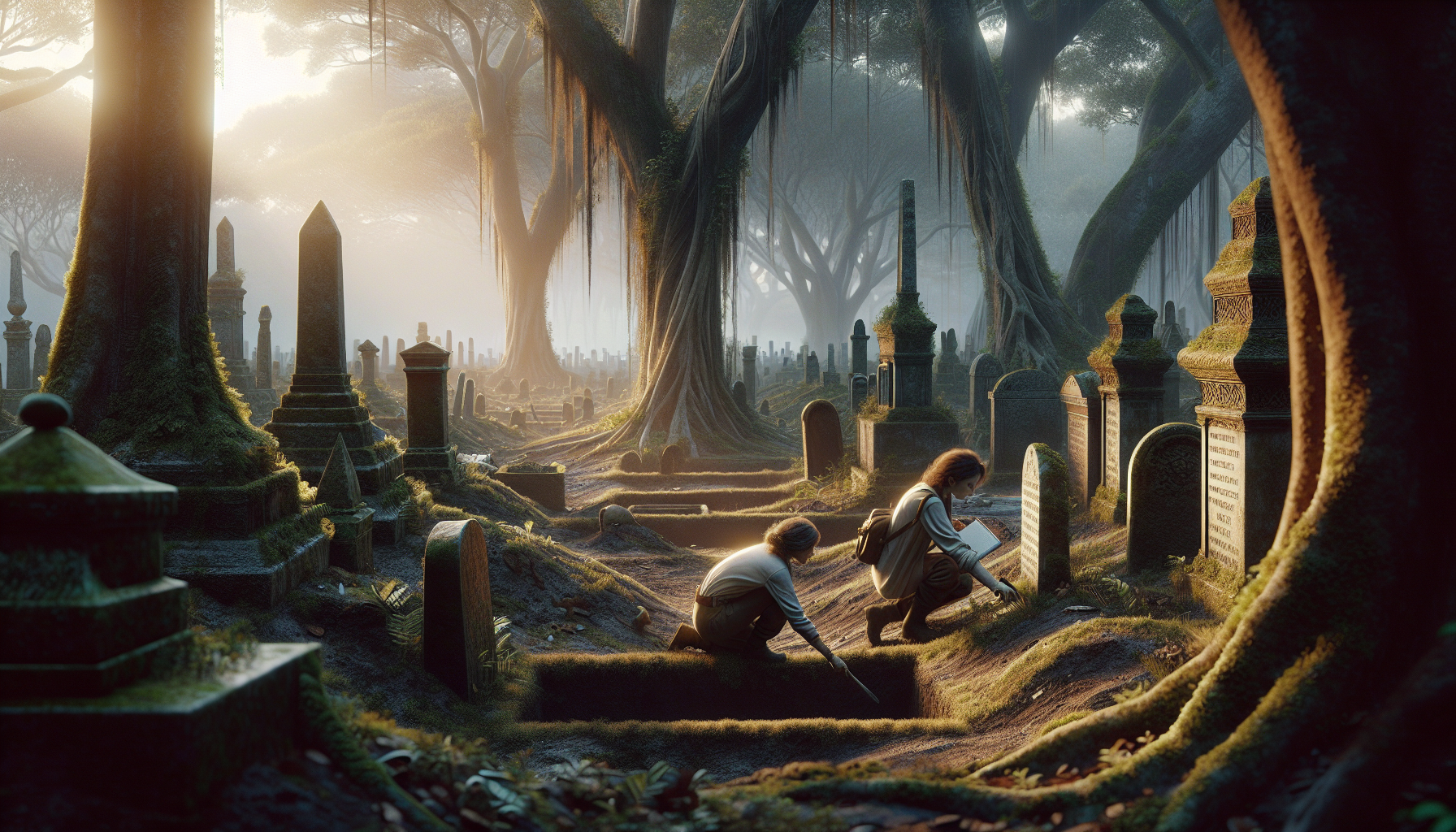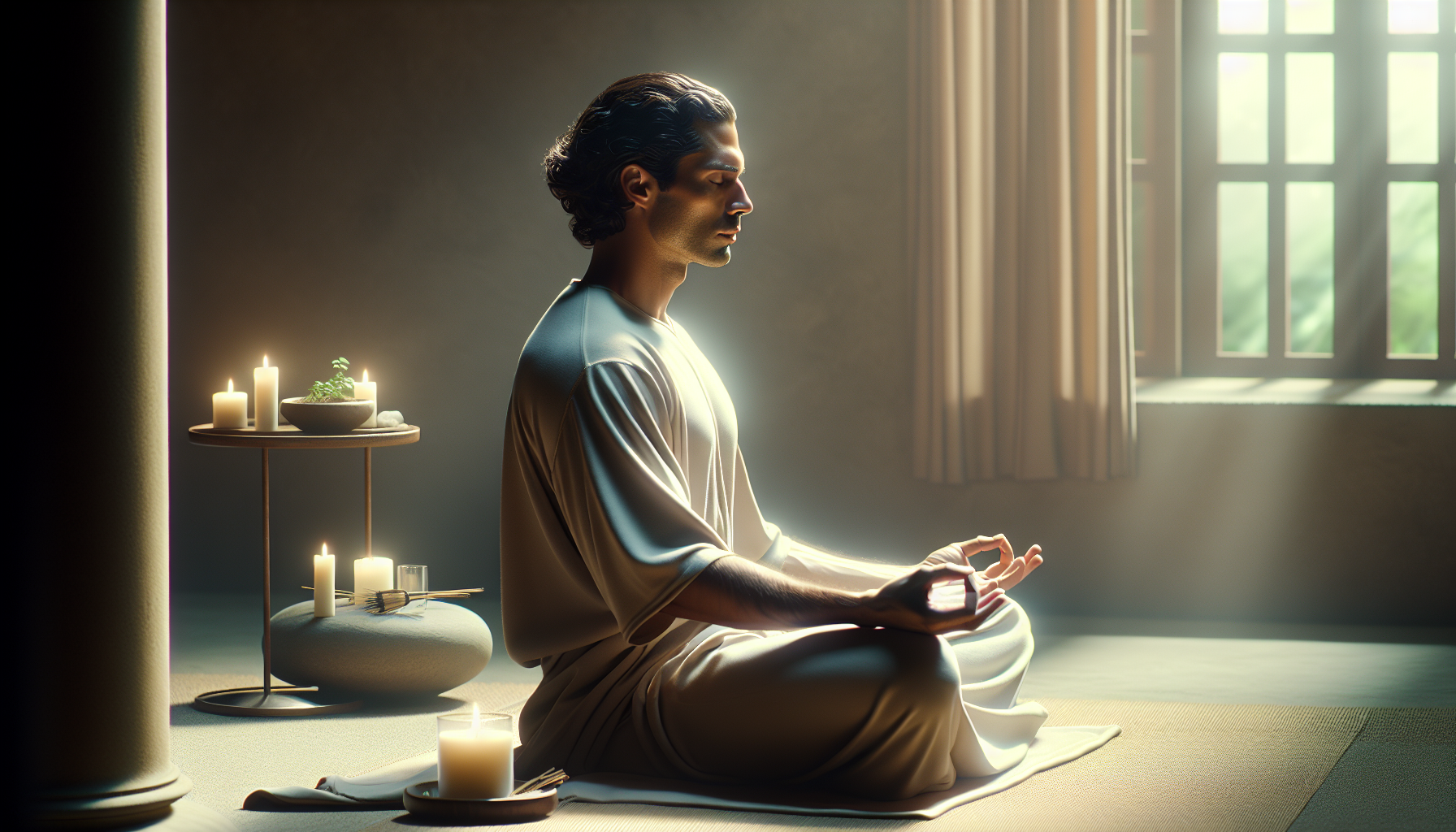In the quiet stillness of ancient burial grounds, where time appears to stand still, there lies a profound connection between the past and present—a bridge formed not only by history but also by the stories, cultures, and legacies of those who came before us. These sacred spaces, often shrouded in mystery and reverence, act as living memory archives, offering invaluable insights into the lives and societies of our ancestors. As we tread softly upon the earth that holds generations of history, we are reminded that beneath our feet lies a tapestry woven with human experience, waiting to be unearthed and understood. 🏺
The exploration of burial grounds is not merely an archaeological endeavor; it is a journey into the heart of humanity itself. Through the examination of these sites, we gain a deeper understanding of the customs, beliefs, and social structures of ancient civilizations. From the grand pyramids of Egypt to the humble mounds of indigenous tribes, each burial site tells a unique story, reflecting the values and priorities of the culture it represents. In this exploration, we will delve into how these sacred spaces serve as repositories of cultural memory, offering us a glimpse into the rituals and traditions that shaped societies across time and space.
Throughout this article, we will traverse the globe, exploring notable burial sites and uncovering the rich tapestry of narratives they hold. We will examine the intricate burial practices of ancient cultures, the symbolism embedded within these rites, and the ways in which modern archaeology is bringing these stories to light. Moreover, we will discuss the ethical considerations and challenges faced by researchers in preserving these sites while respecting the cultural significance they hold for descendant communities. Join us on this captivating journey as we unearth the past, revealing how burial grounds, far from being mere resting places, are vibrant archives that continue to inform and enrich our understanding of the human experience. 🌍
The Historical Significance of Burial Grounds
Burial grounds have served as resting places for the deceased across different cultures and epochs. These sacred spaces are not merely areas designated for the dead but are vibrant repositories of historical, cultural, and social narratives. They reflect the beliefs, practices, and societal structures of the communities that used them, offering a unique lens through which we can view the past. In many cultures, the care and maintenance of burial grounds were integral parts of communal life, symbolizing respect and continuity between the living and the deceased. Throughout history, various civilizations have developed distinct customs and architectural styles surrounding burial practices, revealing a deep connection between the living and the spiritual world.
The study of burial grounds provides invaluable insights into historical events, migrations, and interactions among different cultures. For instance, the discovery of burial mounds in regions such as Europe and Asia has shed light on the trade routes and cultural exchanges that occurred centuries ago. By analyzing artifacts and human remains, archaeologists can piece together information about the diets, health conditions, and lifestyles of past populations, painting a vivid picture of their daily lives.
Moreover, burial grounds are often rich in artistic and symbolic expressions. The epitaphs, monuments, and grave markers found in these spaces frequently feature intricate designs and inscriptions that convey religious beliefs, societal values, and personal stories. These elements serve as a form of communication between generations, allowing us to understand how individuals and communities interpreted life, death, and the afterlife.
The Archaeological Perspective: Unveiling Stories from the Earth
Archaeology plays a crucial role in unearthing the stories buried within these sacred sites. Excavations and analyses of burial grounds provide a wealth of information about past societies, revealing details that written records alone cannot offer. The stratification of burial layers, the positioning of bodies, and the objects interred with the deceased are all key elements that archaeologists examine to draw conclusions about ancient practices and beliefs.
One of the most significant archaeological findings is the variety of burial practices employed by different cultures. From simple inhumations to elaborate tombs and mausoleums, each method reflects the social status, religious beliefs, and cultural values of the individuals and communities involved. For instance, the ancient Egyptians are renowned for their elaborate burial customs, which included mummification and the construction of grand pyramids to honor their pharaohs. These practices were deeply rooted in their beliefs about the afterlife and the importance of preserving the body for eternity.
The excavation of burial sites often leads to the discovery of artifacts and human remains that can provide crucial information about the health, diet, and lifestyle of past populations. By analyzing these materials, archaeologists can infer details about the prevalence of certain diseases, dietary habits, and even the impact of environmental changes on ancient communities. This information not only enriches our understanding of the past but also helps us draw parallels with contemporary issues related to health and sustainability.
For a visual exploration of archaeological findings in burial grounds, watch this insightful video titled “The Secrets of Ancient Tombs” from the National Geographic channel.
The Cultural Dimensions of Burial Practices
Burial practices are deeply intertwined with cultural beliefs and traditions. Across the globe, diverse communities have developed unique rituals and ceremonies to honor their deceased. These practices are not only reflections of individual and collective identities but also serve as mechanisms for coping with loss and expressing reverence for the departed. The cultural dimensions of burial practices are rich and varied, encompassing a wide range of symbolic gestures, rites, and traditions.
In many indigenous cultures, burial practices are considered sacred acts that maintain the balance between the physical and spiritual realms. These rituals often involve communal gatherings, where songs, dances, and storytelling are used to celebrate the life of the deceased and ensure their safe passage to the afterlife. Such ceremonies highlight the interconnectedness between the living and the dead, emphasizing the importance of maintaining ancestral ties and honoring the wisdom passed down through generations.
Furthermore, the evolution of burial practices over time reflects broader cultural and societal changes. For example, the transition from cremation to burial or vice versa in certain societies can indicate shifts in religious beliefs, technological advancements, or responses to environmental challenges. Understanding these transformations provides valuable insights into the dynamic nature of cultural identity and the ways in which communities adapt to changing circumstances.
To learn more about the cultural dimensions of burial practices, take a look at this comparative table outlining some key differences:
| Culture | Burial Practice | Significance |
|---|---|---|
| Ancient Egypt | Mummification and Pyramids | Preservation of the body for the afterlife |
| Viking Norse | Ship Burials | Journey to the afterlife |
| Hindu | Cremation | Release of the soul for reincarnation |
Modern Implications and the Role of Technology
In the contemporary era, burial grounds continue to hold significant meaning, serving as spaces for reflection, remembrance, and cultural preservation. However, modern developments and technological advancements have also introduced new challenges and opportunities in the management and study of these sites. Urbanization, population growth, and environmental concerns are some of the factors that influence how burial grounds are maintained and utilized today.
One of the key implications of modernity is the increasing pressure on burial spaces due to urban expansion. As cities grow, the availability of land for new burial sites becomes limited, leading to innovative approaches such as vertical cemeteries and green burials. These alternatives not only address spatial constraints but also promote sustainable practices by reducing environmental impacts.
Technology plays a pivotal role in preserving and studying burial grounds. Advanced imaging techniques, such as ground-penetrating radar and 3D scanning, enable archaeologists to explore sites without invasive excavations, preserving the integrity of these spaces while uncovering hidden structures and artifacts. Moreover, digital platforms and databases facilitate the documentation and sharing of information, allowing researchers and the public to access valuable resources and contribute to ongoing preservation efforts.
For an engaging look at how technology is transforming the study of burial grounds, explore the video “Revolutionizing Archaeology with Technology” on the Tech Insider channel.
The Future of Burial Grounds: Balancing Heritage and Innovation
As we look to the future, the preservation and management of burial grounds require a delicate balance between honoring cultural heritage and embracing innovation. These spaces must be protected as vital components of our collective memory while adapting to the evolving needs and values of contemporary society. The role of community engagement and collaboration is crucial in ensuring that burial grounds continue to serve as meaningful and accessible sites for reflection, education, and cultural exchange.
Efforts to preserve burial grounds often involve partnerships between local communities, government agencies, and heritage organizations. These collaborations aim to develop sustainable management plans that address conservation challenges while respecting the cultural significance of these sites. Public awareness and involvement are key to fostering a sense of ownership and responsibility towards these spaces, encouraging individuals to participate in preservation activities and support initiatives that promote cultural heritage.
Furthermore, the integration of innovative practices, such as the use of digital storytelling and virtual reality, can enhance the visitor experience and make burial grounds more accessible to diverse audiences. By combining traditional narratives with modern technology, these initiatives offer new ways to engage with history and create meaningful connections with the past.
- Explore the history and significance of local burial grounds in your community.
- Participate in preservation projects or volunteer with organizations dedicated to heritage conservation.
- Share stories and information about burial grounds with others to promote awareness and appreciation.
As we continue to navigate the complexities of modern life, the role of burial grounds as living memory archives becomes increasingly important. These spaces offer invaluable opportunities for reflection, learning, and cultural connection, reminding us of the enduring bonds between the past, present, and future.

Conclusion
In conclusion, the exploration of burial grounds as living memory archives provides a profound lens through which we can understand our shared human history and cultural evolution. These sacred spaces are not merely places for mourning; they are repositories of personal stories, cultural practices, and historical narratives that connect us to the past in a deeply meaningful way. By examining these grounds, we gain invaluable insights into the social structures, beliefs, and traditions of bygone eras.
Throughout this article, we have delved into several key points. Firstly, we explored the historical significance of burial grounds, highlighting how they serve as tangible links to our ancestors and offer a glimpse into the lives of those who came before us. We discussed the various ways these sites reflect societal changes, from shifts in religious practices to evolving attitudes toward death and remembrance.
We also examined the cultural and anthropological perspectives, emphasizing how burial grounds act as mirrors to the diversity of human expression. These spaces reveal the intricate tapestry of rituals and customs that define different cultures, allowing us to appreciate the richness of global heritage. From elaborate tombs and mausoleums to modest gravestones, each marker tells a unique story, contributing to our understanding of human civilization.
Moreover, we addressed the contemporary relevance of preserving these sites. In a rapidly urbanizing world, the encroachment on burial grounds poses a threat to our collective memory. Preserving these sites is crucial not only for historical research but also for maintaining a sense of identity and continuity. They remind us of the impermanence of life and the enduring impact of those who have passed.
Furthermore, we considered the technological advancements that have enhanced our ability to study and preserve burial grounds. Modern tools such as ground-penetrating radar and 3D modeling have revolutionized archaeology, enabling us to uncover hidden layers of history without disturbing the sanctity of these sites. These innovations underscore the importance of interdisciplinary collaboration in safeguarding our heritage.
The topic of burial grounds extends beyond academic interest; it is a call to action for communities, historians, and policymakers alike. By recognizing the value of these sites, we can foster a culture of respect and stewardship. Engaging with burial grounds encourages us to reflect on our mortality, prompting discussions about how we wish to be remembered and the legacy we leave behind.
To this end, we invite you, the reader, to contribute to this ongoing dialogue. Share your thoughts and experiences related to burial grounds in the comments section. Have you visited a burial site that left a lasting impression? What stories did it tell you? Engaging in these conversations enriches our understanding and appreciation of the past.
We also encourage you to share this article with others who might find the topic intriguing. By spreading awareness, we can collectively work towards preserving these vital historical resources for future generations. Together, we can honor the memories enshrined in these grounds and ensure that they continue to serve as living archives of our shared human experience.
In applying what you’ve learned, consider participating in local initiatives aimed at preserving and documenting burial sites in your community. Your involvement can make a difference, ensuring that these spaces remain protected and accessible for generations to come. 🌱
For further reading and exploration, you may find valuable insights in resources such as the World Monuments Fund, which provides information on efforts to preserve historical sites, or the Smithsonian Institution, which offers a wealth of research on cultural heritage.
In conclusion, the study of burial grounds as living memory archives not only enriches our understanding of history but also connects us to the essence of what it means to be human. Let us cherish and preserve these sites, ensuring that the stories they hold continue to inspire and educate us all.
Toni Santos is a visual storyteller and cognitive explorer whose work delves into the mental landscapes of ancient cultures—revealing how different civilizations perceived reality, memory, and meaning long before modern psychology existed. Through symbolic imagery and narrative inquiry, Toni brings to life the divergent ways of thinking that shaped lost worlds.
His creative path is guided by a fascination with non-linear logic, oral cosmologies, and the mythic frameworks that once guided decision-making, emotion, and identity. From memory temples carved in stone to visual languages encoded in textiles, every piece Toni creates reflects the vast cognitive diversity of the human story.
With a foundation in visual design and cultural semiotics, Toni blends analytical depth with artistic expression. His work goes beyond historical reconstruction—it reawakens the embodied, intuitive, and ritual-based intelligence of ancient minds, inviting us to question the assumptions of modern thought.
As the mind behind Vizovex, Toni curates visual studies, essays, and immersive content that explore forgotten epistemologies—ways of knowing that connected people to myth, land, and each other in profoundly different ways.
His work is a tribute to:
The symbolic intelligence of pre-modern cultures
The neural diversity embedded in ancient rituals and storytelling
The deep memory systems that shaped identity and perception
Whether you’re a researcher, an artist, or a seeker of hidden wisdom, Toni invites you to enter a space where cognition is culture, and where the past speaks through signs, cycles, and symbols—one myth, one memory, one mind at a time.





